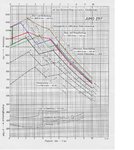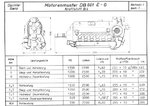Shortround6
Lieutenant General
Those are the headline acts, to be sure, but you've got a couple of other acts at this festival as well. From Russia there is the AM-35 and the M-105P (a much reworked and enlarged H-S 12Y rated up to 2700 rpm and a very solid 1200-1250 hp), you've also got the wonderful Italian Isotta Fraschini Delta, a 27 liter air cooled V12 capable of around 700-800 hp.
The other acts are distinctly second string. When they come on stage it is time to hit the restroom and then go for more refreshments because you won't miss a thing.
The AM-35 was a beast of an engine that went 240-500lbs more than the 4 prime engines. It also had a very short service life, 50 hours between overhauls?
The M-105P while light in weight is also down on power,, it doesn't hit that "very solid 1200-1250 hp" until mid 1942 and does it at rather low altitudes. While it goes longer between overhauls than the AM-35 it is still a short lived engine compared to the Allison and Merlin. Compared to DB and Jumos I don't know.
As for the Isotta Fraschini Delta, 750hp at 4000meters for a 510kg engine is too little. This is not a small engine either in physical size. About the only engine mentioned that it is narrower than is the AM-35.
Fastmongrel has mentioned the Ford V-12, Almost all American aircraft engines took a minimum of 3 years to go from initial design to 5th production engine. Even if Ford pulls the miracle of the century the engine wouldn't be ready until mid 1942.


